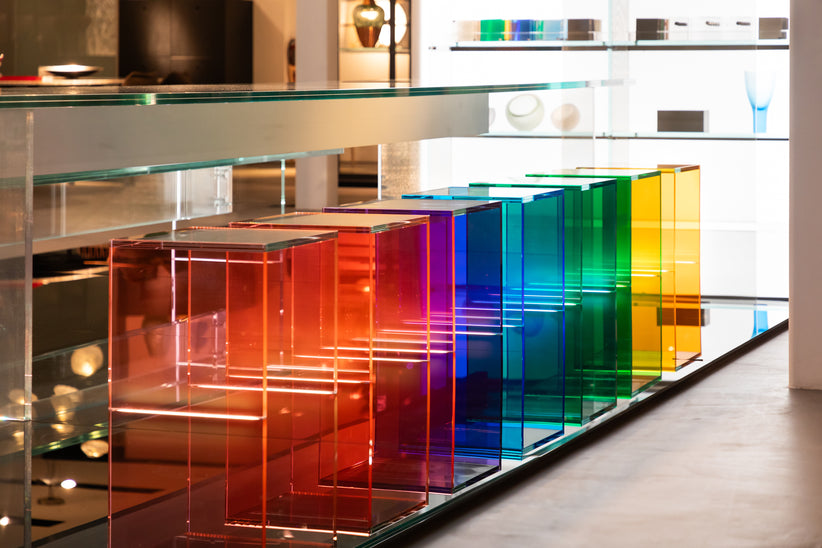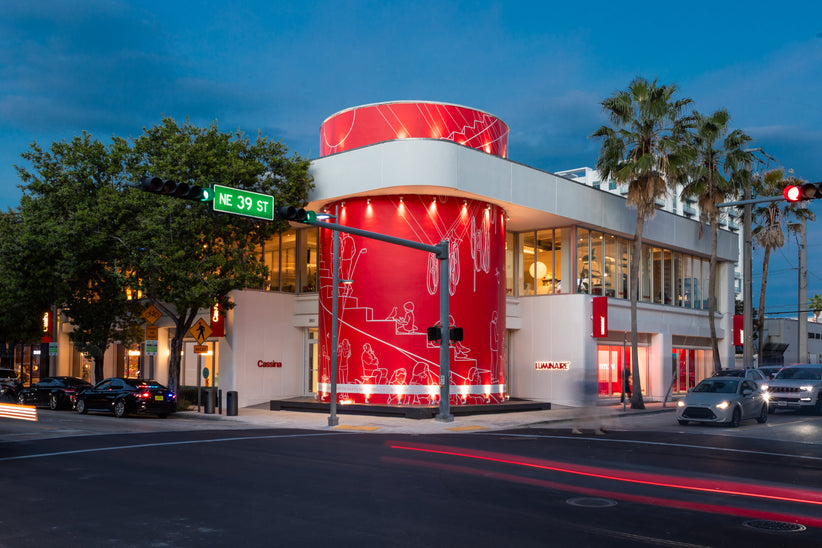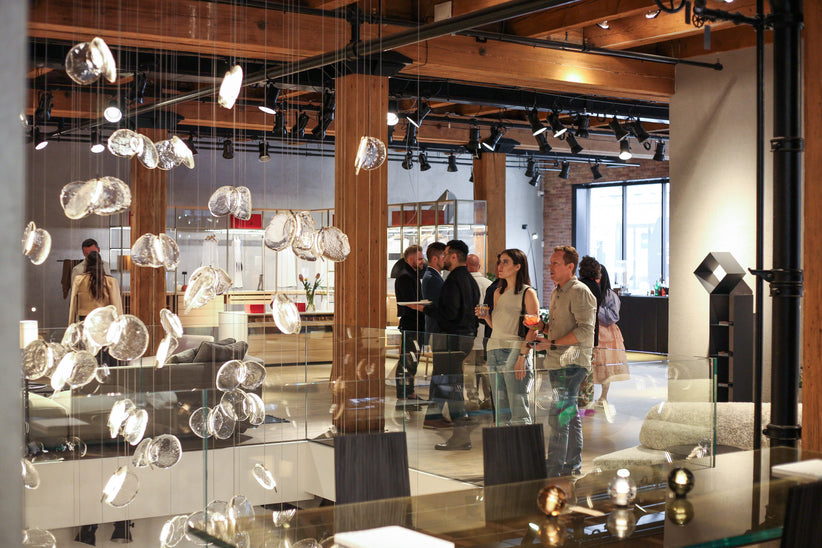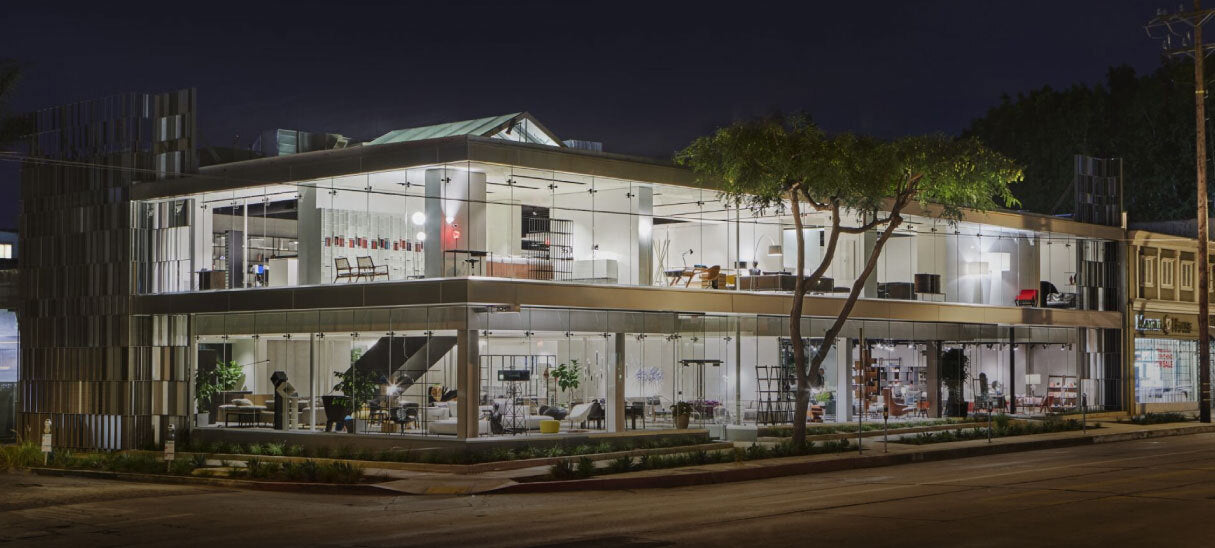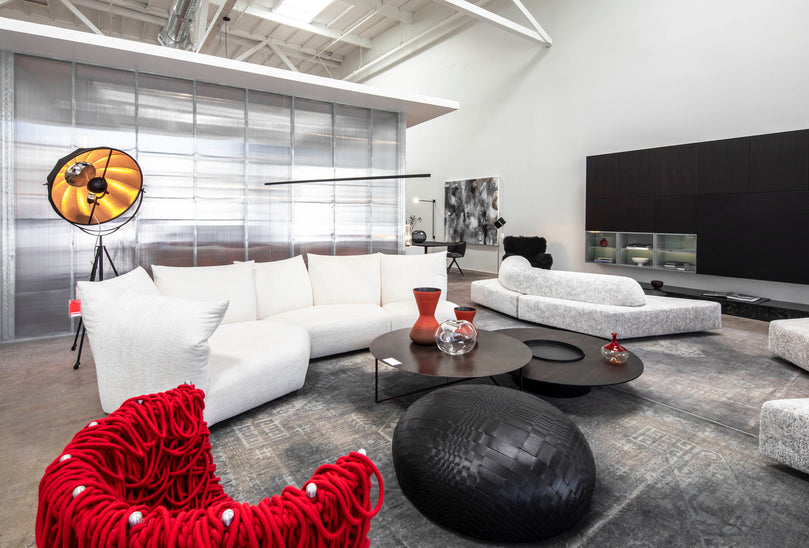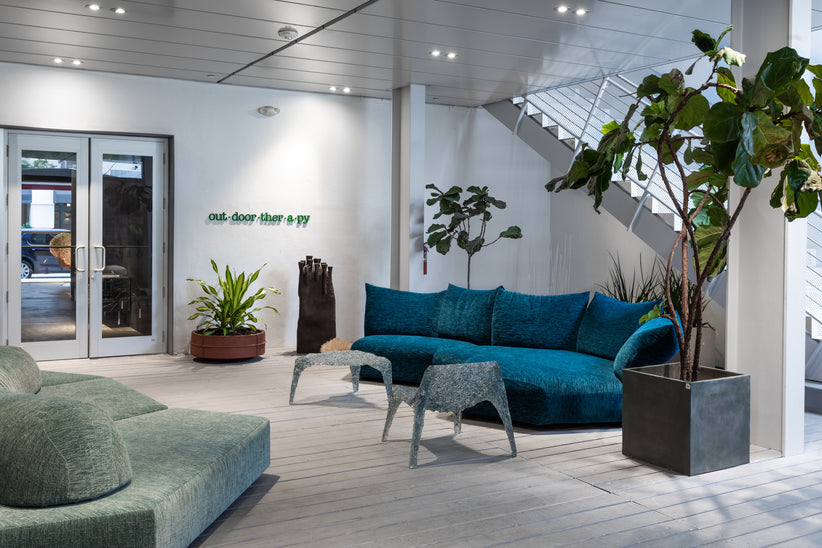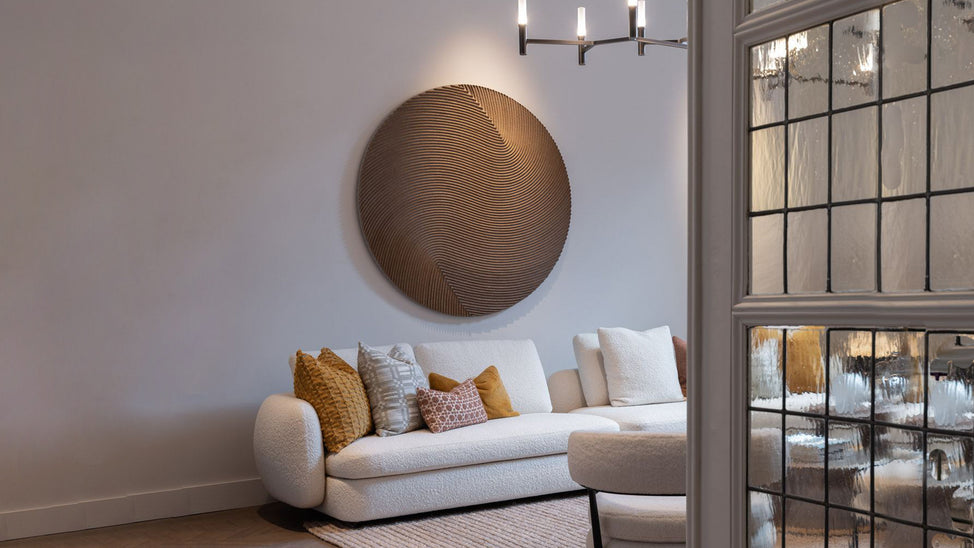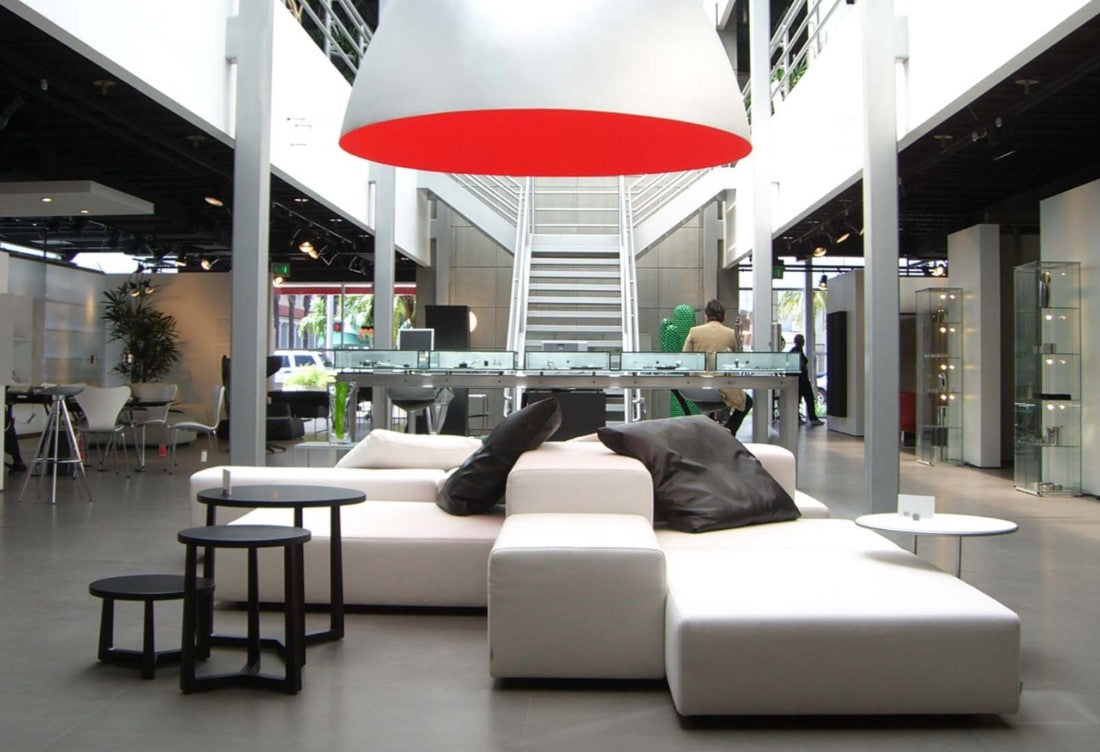Good design captivates the senses and nourishes our souls with pleasing forms that breathes serenity and vitality into our living spaces, reflecting our desires and dreams as it provides comfort and serendipity in our daily routines, reassuring, elegant, and transcendent. Opportunities to acquire the kind of design that enriches lives is realized through the contemporary retail market, where consumer trends and client wishes turn intent into action, sometimes executed seamlessly on a buyer’s journey of closely personal services and expert care, and sometimes approached with trepidation and overwhelming resolve, depending on where customers choose to shop. As we look at current developments in design retail, especially when it comes to furniture design and accents for the home, we see a future that is ripe with narratives that encourage strong connections between ourselves and the objects we choose to grace our surroundings, uncovering a market that achieves what Luminaire has always aimed to do – crafting a voyage of discovery that makes the design buying experience efficient, convenient, and gratifying, meeting customers where their needs dictate so that the journey from dreams to reality is unified with ease and delight, and the process of procuring good design is enjoyable and stress-free, a welcoming introduction to a life made complete with home products that enhance our everyday, exceptional and rewarding.
As the public interest in making a house feel like home with products that act as extensions of ourselves, singing of timelessness and sophisticated character, the global furniture design market is expected to grow significantly in the future, specifically from $541.52 billion in 2023 to $780.43 billion in 2030. It is expected that design retailers will respond to this growth by adapting what is called omnichannel commerce, where all points of service and advertising is brought together in both the digital sphere and in close hands-on encounters that focus on improving the buyer’s journey. From an increase in online furniture sales, to an investment in works that are made from sustainable materials and manufactured through environmentally friendly process, and CGI product imagery that allows us to visualize what piece looks like in a given space, the future of the furniture store relies on crafting ecommerce experiences that are enchanting and in-store events that are outstanding, unique, and dazzling with surprise and repose, supporting new traditions that captivate the up and coming generations while engaging older audiences with the tried and true, the classic and the familiar. It is believed that building an omnichannel retail strategy will reach more consumers and aid in the growth of customer loyalty, with an explosion in the growth of business, more efficient staff, and inventory control. Omnichannel is therefore more than merely a marketing strategy with a web presence; it is about fully integrating the entire digital and traditional commerce experience, complementing online interactions with real world touch points so that consumers can make insightful discoveries online, customize them from the comfort of their own home, visualize what potential desired products look like in their own space, and have a beautiful showroom to visit where exhilarating pieces engage the senses so that the design becomes a living entity that inspires minds and uplifts the soul.
When analyzing omnichannel approaches, ecommerce indeed plays a vital role. Most certainly, over the past few years, in the wake of a pandemic that left many people at home and hindered in-person retail, online shopping experienced a surge. It is often thought that the pandemic sped up the adoption of digital technologies by several years, and while we have since returned to pre-pandemic in-store access, investments in ecommerce and online technology has not slowed, with over 69% of furniture companies continuing to advance their online appearance and focus on the ecommerce experience. It is predicted that design retail of the future will grow an online presence that allows consumers to browse colors and configurations of products that may not be available on the showroom floor, with the idea of the “endless aisle” making possible what the confines of a physical store limits – the ability to see a product with all of its possible options before entering a showroom to learn how a particular design feels and navigates space, allowing clients to get a better sense of what they are buying and enjoying a more engaging experience. Another aspect of online retail of the future involves the incorporation of virtual consultations. As digital and in-store experiences start to blur, it is important to create a welcoming environment for both shopping online and engaging in-person so that people can have an up-close encounter wherever they are. One way to accomplish a personal touch to the digital space is virtual consultations. Live chat tools or virtual video consultations can give customers access to a professional who can help guide the best decisions for their home and allow them to gather pertinent information on product selection before they take the time need to step into the store and experience the products in person. Customers can share floor plans with interior architects, send retailers photos of their homes and items that inspire them, or hop on to an interactive conversation where they can receive prepurchase product information or expert advice on how to make the most of their space and translate dreams into reality. The virtual one-on-one session might be just what the clients needs to sort through relevant ideas both before shopping in person and in the midst of showroom visits.
As online shopping increases, it is important to note that the majority of people still prefer an in-person store experience when shopping for soul riveting design, and thus the omnichannel approach elevates the in-store experience to one that is informative and inspiring. When in the store, one can sit on a sofa, embrace the comfort of a reclining chair, and relish the details that make home accents and curated living spaces a work of art that can be welcomed into your space and become members of your design family. In the future, as we look to how one can channel the convenience of online shopping experience, especially for younger consumer who seem more invested in it, we must continue to create an engaging and deeply satisfying in-store experience as well, for a seamless buyer journey from beginning to end. Here we discuss the importance of experiential retail, where the curation of an experience within a space makes a location more than simply a store but embraces a voyage of discovery with products that shape a lifestyle of poetic harmony and the charm of individualized personality. While online experiential retail can include high quality 3D visualization to see how designs will look in your specific space for an immersive experience, in-store experiential retail creates an environment that touches all the senses and awakens minds to the truly transformative power of good design, offering curated spaces that let the imagination wander. As customers express a desire for more personalized and more intimate experiences with design retail than in the past, we find store locations that are most desired are no longer massive, as once was the hallmark, but rather smaller and more cozy, popping up near where customers live with improved capabilities for home deliveries and services that make the entire shopping journey more efficient and convenient. The future of design retail is therefore more personal and accessible, and offers plenty of options for customization and expressing one’s personality wherever possible.
To close, the future of design retail will also be impacted by the future of furniture design, as design manufacturers fashion new products that speak to the priorities and desires of an evolving clientele. Whether making design that is inclusive to all body types, producing furniture from sustainable materials and built through eco-friendly manufacturing processes, or exploring smart furniture as a product innovation, furniture today and in the future serves a decidedly functional purpose yet goes beyond the practical to reflect an intentional lifestyle that is natural and seamless or high tech and cutting edge, carrying an emotional depth of character whether classic or eclectic, traditional or avant-garde. As design retail evolves with the products that are sold, and makes purchasing these items a pleasurably holistic experience between the digital and in-person realms, we see a future that is promising, catered to the customers’ needs and aspirations, as good design continues to enter people’s lives, affecting them with awe-inspired assurance and cultured beauty.
June 2024


